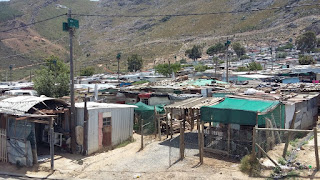Although I have always enjoyed reading, there are a number of the classics - especially the weightier ones - that I've never tackled. The Challenge seemed an excellent opportunity to rectify this. The novel that immediately sprang to mind was War and Peace but Vivien, the friend whose own Sixty at 60 Challenge inspired me to do mine, had chosen that as one of her tasks so I felt I should pick something else.
My husband Peter and my very well-read friend Kathy strongly recommended Middlemarch, by George Eliot. Having ploughed my way through Silas Marner and The Mill on the Floss at school, and loathed both - so miserable and wretched - I had some doubts. On the other hand I'd found the TV adaptation some years ago very absorbing, and with glowing recommendations from two people whose opinions I respected, I decided to plump for it.
Full of enthusiasm, I started on my birthday. Five weeks later, I was only 70% of the way through - it certainly meets the requirement of being weighty - and I wasn't enjoying it at all. The characters were well drawn and the social history aspect of life in 1830s provincial England was interesting, but I didn't feel involved in the story and thought that if Dorothea was so daftly high minded as to have married the grindingly dull Mr Casaubon, she had only herself to blame. Nearly everyone was miserable and suffering from various unfairnesses and misfortunes, and it was all too reminiscent of the other two Eliot classics I'd had to endure.
Suddenly, though, it came alive and I found the last quarter riveting. Instead of interminably long and convoluted sentences - over a page each in some cases - often about politics or religion, the pace quickened and the focus shifted more towards woman's role in society and the extent to which money (or lack of it) determines happiness. Particularly poignant was the realisation by Dr Lydgate that he has made an awful mistake in marrying the shallow and worldly Rosamund, and yet he simply must find a way of making the marriage work if their lives together are to be bearable. If it means abandoning his long-cherished ambition of doing research that will bring real benefits to many people, and settling instead for a profitable private practice, that is what he has to do - even though his wife won't even understand how much he has sacrificed. Without money or the possibility of divorce without scandal, he has no choice.
I decided by the end that it was well worth struggling through the first three quarters, to reap the rewards of the rest. Anyone with an interest in the politics or religion of the time, particularly the Reform Bill, would probably enjoy much of the earlier part too.






















